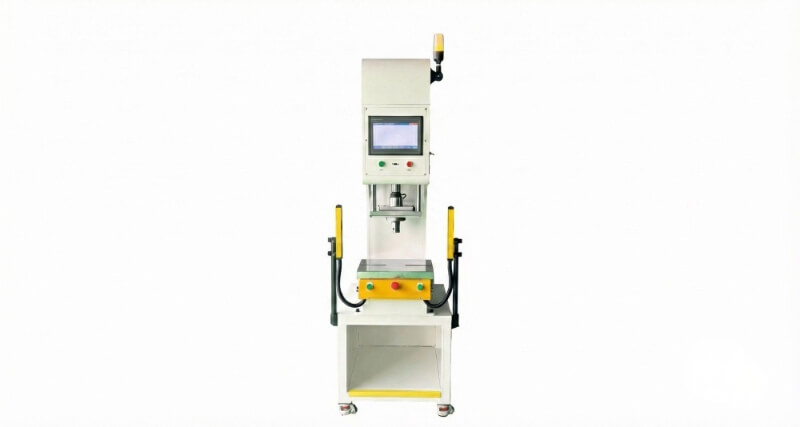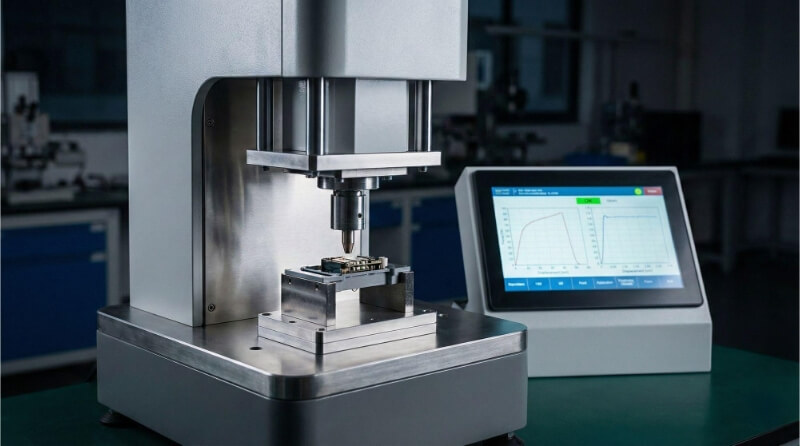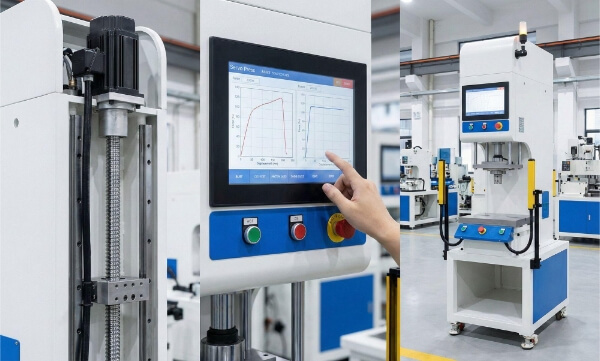Have you ever needed to shape metal into a perfect curve or cylinder? Whether for structural purposes or artistic creations, achieving precise and consistent bends in metal can be challenging. If you’ve struggled with this, you’re not alone. Many people face difficulties when trying to bend metal accurately and efficiently.
Inaccurate bends can lead to wasted material, higher costs, and delays in your project timeline. These setbacks can be frustrating and costly, impacting your budget and schedule.
This is where roll bending comes in. Roll bending is a highly effective technique for creating smooth, consistent curves in sheet metal and other materials. Using a series of rollers; you can achieve precise bends with minimal effort, reducing waste and ensuring a perfect fit for your project.
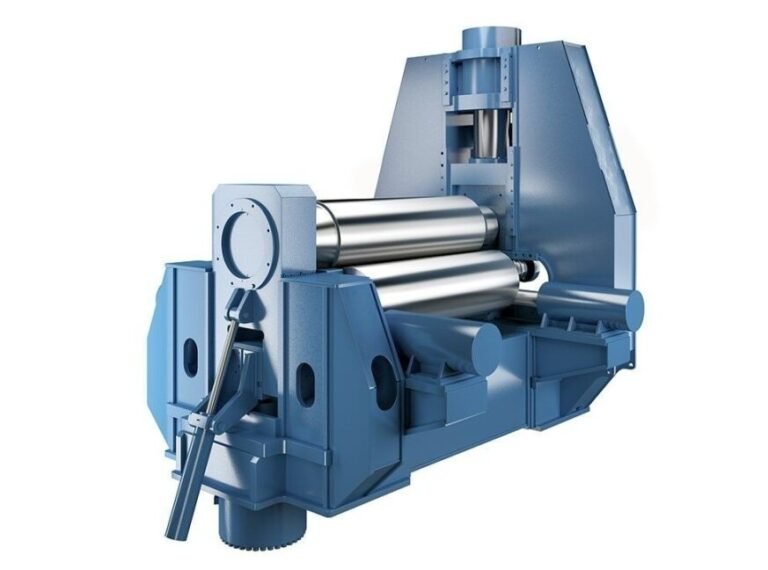
Fundamental Concepts
What is Roll Bending?
Roll bending is using rollers to bend metal into curved shapes. This process uses rollers to apply pressure on the material and bend it in small increments to achieve the desired curve. The process’s principle is to gradually deform material without creating cracks or defects.
The Critical Components in Roll Bending Machines
Three main components are usually found in a roll-bending machine.
- Rollers: These rollers are the main components of the machine. These come in a variety of sizes and configurations depending on the type or bend that is required.
- Frame: The frame supports both the rollers and the material to be bent. It ensures consistency and stability.
- Control System: This includes the software or mechanisms used to adjust roller positions and pressure on the material. Computerized controls may be used on advanced machines to increase precision.
Roll-bending Types
Three-Roll Bending
The most common is three-roll bending. Three rollers are arranged triangularly. The material is passed between the rollers, and the central roller applies downward force to create the bend.
Four-Roll Bending
Four-roll benders add roller to their configuration for greater precision and control. The additional roller holds the material more securely, allowing for tighter, more accurate bends.
Vertical Roll Bending
Vertical roll bending is achieved by orienting the rollers vertically. This arrangement is beneficial when bending thick and heavy plates. Vertical setups can reduce the footprint of a machine and improve the handling of large pieces.
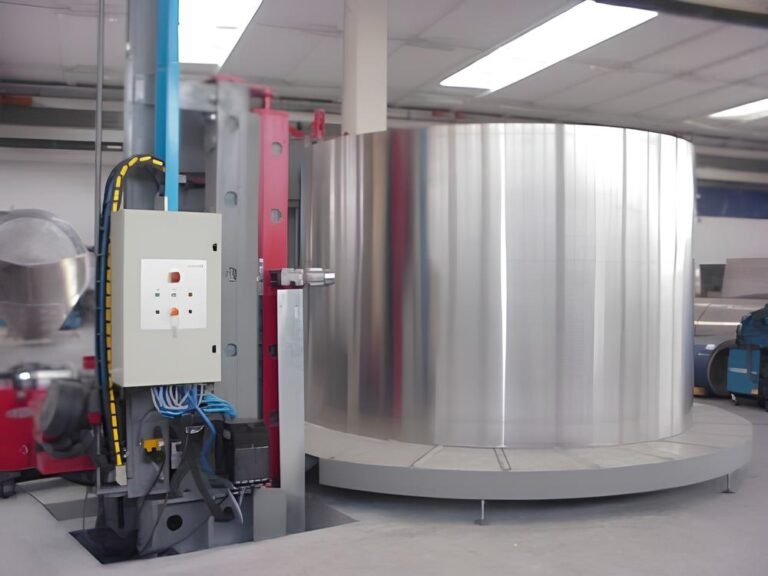
Roll Bending Techniques
Cold Roll Bending
Cold roll bending involves bending the metal at ambient temperature. The material is not heated, so its properties and finish are maintained. Cold roll bending works best with ductile materials that can be easily bent without cracking.
Hot Roll Bending
The metal is heated before it is bent in hot roll bending. The material becomes more flexible after heating, reducing the chance of cracking during the bending procedure. This technique is beneficial for thicker, more rigid materials which are hard to bend at cold temperatures.
Incremental Roll Bending
This method bends the material in small increments to achieve the desired form. The material is bent slightly more each time the rollers are used. This technique gives us greater bend control and lowers the defect risk.
Materials used in Roll Bending
Metals that are commonly bent
Roll bending involves a wide range of metals. Metals that are commonly used include:
- Steel: Carbon and stainless steel have a wide range of uses due to their strength, versatility, and durability.
- Aluminum: This lightweight metal is known for its corrosion-resistant and lightweight properties.
- Copper: Known as a metal with excellent malleability and conductivity, it has many applications.
- Brass: Brass is used for decorative and structural purposes. It has a high resistance to corrosion and strength.
Special Alloys – Their Properties
Roll bending is a specific application that benefits from special alloys.
- Alloys of Titanium: The titanium alloys have a very high strength-to-weight ratio and are corrosion-resistant.
- Alloys of Nickel: Nickel alloys have excellent heat and corrosion resistance.
- Inconel: Inconel is resistant to extreme temperatures and stresses.
Material Selection Criteria For Roll Bending
The following factors are essential when choosing the suitable material to roll bend:
- Bendability: Material must be flexible enough to bend without cracking or losing integrity.
- Strength: The material used for the application must provide the required strength and durability.
- High Corrosion Resistant Materials: When exposed to harsh environments, highly corrosion-resistant materials are preferred.
- Weight: Lightweight Materials can benefit applications where weight reduction is essential, like the aerospace and automotive industries.
- Cost: Budget considerations are often a significant factor in selecting materials, as they balance performance and affordability.
Roll Bending Equipment
Roll Bending Machines Overview
Roll bending machines play a vital role in the fabrication of metals. Roll bending machines come in different sizes and configurations. Each is designed to handle certain types of bends or materials. These machines are primarily composed of rollers, frames, and control systems.
Automated Roll Bending Machines vs. Automated roll bending machines
Manual Roll Bending Machines
Manual machines require physical exertion to operate. Manually adjusting the rollers and applying pressure offers a high degree of control but is time-consuming and labor-intensive.
Automated roll-bending machines
Automated machines use motors with computerized controls to adjust rollers and apply force. These machines are more efficient and faster, handling larger projects without human intervention.
The Roll Bending Technology Advances
Recent advances in roll bending have improved precision, efficiency, and versatility. Some notable innovations include:
- Computer Numerical (CNC) Control: CNC control allows us to control the bending process precisely. We can program complex shapes, and they will be repeated accurately.
- Hydraulic System: Modern roll bending machines use hydraulic systems for even more extreme pressure applications.
- Software Integration: Integrating CAD software (Computer Aided Design) allows seamless design transfer to the roll-bending machine.
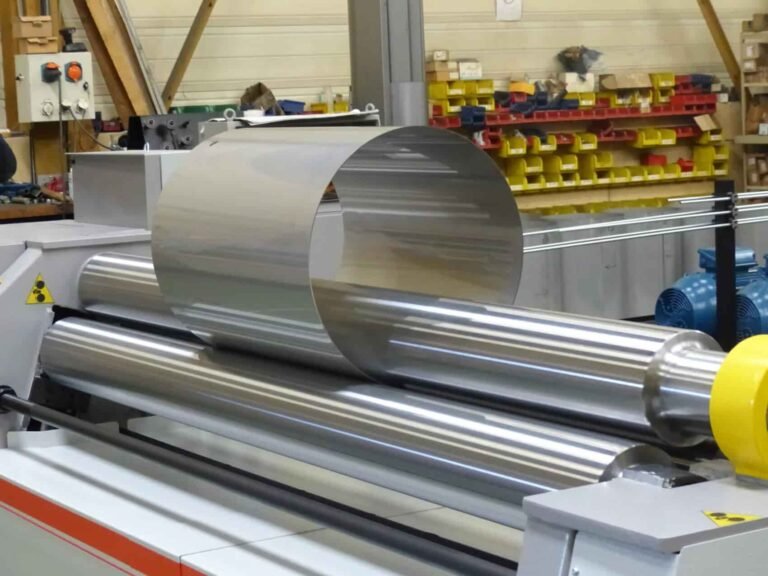
Roll Bending Process
Step-by-Step Roll Bending Procedure
- Material preparation: Firstly, we prepare and select the material that will be bent. We ensure it is clean and free from defects.
- Machine Setup: We adjust our roll bending machines according to the thickness of the material and the desired bend radius.
- Initial pass: Material is fed into the machine, and rollers apply initial pressure.
- Incremental bend: We gradually adjust the rollers and increase the pressure to achieve the desired bent incrementally.
- Final adjustments: We make minor adjustments after the initial bends to ensure that the bend meets all the specifications.
- Inspection: The bent materials are inspected to meet the design requirements.
Setting up and calibrating Roll Bending Machines
For accurate and consistent bends, a proper setup and calibration is essential. This is how we do it.
- Alignment of Rollers: The rollers will be aligned and fastened securely.
- Material selection: We select the rollers according to the type of material and its thickness.
- Initial Pressure Setting: The initial pressure is based on material properties and the desired bend radius.
- Calibration: We perform test bends using test materials to fine-tune machine settings and make necessary adjustments for accuracy.
Roll Bending Quality Control
Roll bending requires a high level of quality. Quality control is implemented in several ways:
- Inspection before processing: We inspect the material to check for defects and make sure it meets all specifications.
- Monitoring in Process: We continuously check for issues or deviations during bending.
- Post-Process Inspection: We conduct thorough inspections after bending using tools like calipers and gauges to verify accuracy.
- Checks for consistency: We regularly test batch samples to ensure quality and consistency.
Roll Bending Design Considerations
Factors Affecting Roll Bending Quality
Roll bending is affected by several factors.
- Material properties: The type of material, its thickness, and temper affect the bendability.
- Configuration of rollers: The size and arrangement of the rollers should be suitable for the material and match the desired bend radius.
- Pressure application: Too little pressure can lead to an incomplete bend, while too much can cause cracking.
- Bend radius: To avoid cracking or deformation, the minimum bend radius of a material is essential to consider.
Roll Bending Design for Efficiency
When designing for roll bending efficiency, we take into consideration the following:
- Material selection: Selecting a suitable material that bends easily and matches the project requirements can reduce processing times and costs.
- Simplified shapes: By designing parts with fewer bends and simpler curves, you can improve the accuracy of your bending.
- Tolerance levels: By setting realistic tolerances for the roll bending processes, it is possible to reduce rework and rejects.
Common Roll Bending Defects – Their Prevention
It is essential to understand common defects to maintain high-quality roll bending.
- Breaking: A crack can form if the bend radius of the material is too tight or brittle. We ensure the bend radius falls within the material’s capabilities and pre-heat more rigid materials to prevent cracks.
- Wrinkling: When the compression side buckles, the result is wrinkled. This can be prevented by maintaining constant pressure and using the correct roller settings. You can prevent wrinkles by using thicker materials and adjusting the bend speed.
- Springback: A material can partially return to its original form after bending due to its elasticity. We can minimize spring back by bending the material slightly more than desired or using materials with lower elastic properties.
- Surface Marks: Surface marks can appear if rollers or materials are not cleaned properly. This can be prevented by ensuring the rollers and material surfaces are clean and debris-free. We also use protective films and lubricants to protect the surface.
Roll Bending vs. Other Bending Techniques
Here are some quick comparisons of roll bending with other bending techniques:
| Aspect | Roll Bending | Press Brake Bending |
|---|---|---|
| Process | Involves passing the material through a series of rollers to achieve a curved shape. | Uses a press brake machine to bend the material by pressing it between a punch and a die. |
| Applications | Ideal for creating cylindrical shapes and large-radius bends. | Best for creating sharp bends, angles, and intricate shapes. |
| Materials | Suitable for a wide range of metals and alloys. | Effective for various metals, particularly sheet metal. |
| Precision | High precision for large and complex curves but less suitable for sharp bends. | Excellent precision for tight bends and detailed work but less effective for large-radius bends. |
| Advantages | Versatile; capable of bending various materials and thicknesses. | Consistent and smooth curves with high repeatability. |
| Disadvantages | Limited for creating tight or complex angles. | Requires careful setup and calibration for optimal results. |
Applications of Roll Bending
Roll Bending in Construction
- Curved metal façades
- Structural steel components
- Architectural elements
- Roof and Cladding Systems
Automotive Applications
- Exhaust systems
- Chassis components
- Roll cages
- Body panels
Aerospace Industry Uses
- Aircraft fuselage section
- Wing components
- Engine casings
- Structural Supports
Energy Sector Applications
- Wind turbine towers
- Oil and Gas Pipelines
- Solar panel frames
- Pressure vessels
Conclusion
The roll bending technique is versatile and practical. The versatility and efficiency of this technique allow us to produce precise bends with high quality for various applications. Roll bending is a complex process that requires a thorough understanding of the materials, processes, equipment, and principles involved. We can enhance our roll-bending abilities with technological advancements and strict quality control.
Do you need a reliable sheet metal parts manufacturer? Shengen is the place to go. We specialize in sheet metal laser cutting, bending, surface finish, and CNC Machining. Reach out to Shengen Today and seek help from professionals!
FAQs
How do you calculate the roll bending?
Roll bending calculations involve determining the force needed to bend metals to the desired radius without creating defects. This calculation includes the yield strength of the material, its thickness and width, and the roller diameter.
What are the main factors that affect the quality of the roll-bending process?
The quality of roll-bending is affected by several factors, such as the properties of the material and the condition and precision of the equipment used for bending.
What is the best way to choose a roll-bending machine?
The suitable roll bending machines will depend on your bending requirements and capacity. You should consider the material you are bending, its maximum thickness and width, and the complexity of the bends.
More Resources:
Types of roll bending machines – Source: Bendmakusa
Critical components of roll bending machines – Source: Rollformingmachine
Avoiding roll bending defects – Source: Reganindustrial
Hey, I'm Kevin Lee

For the past 10 years, I’ve been immersed in various forms of sheet metal fabrication, sharing cool insights here from my experiences across diverse workshops.
Get in touch

Kevin Lee
I have over ten years of professional experience in sheet metal fabrication, specializing in laser cutting, bending, welding, and surface treatment techniques. As the Technical Director at Shengen, I am committed to solving complex manufacturing challenges and driving innovation and quality in each project.

